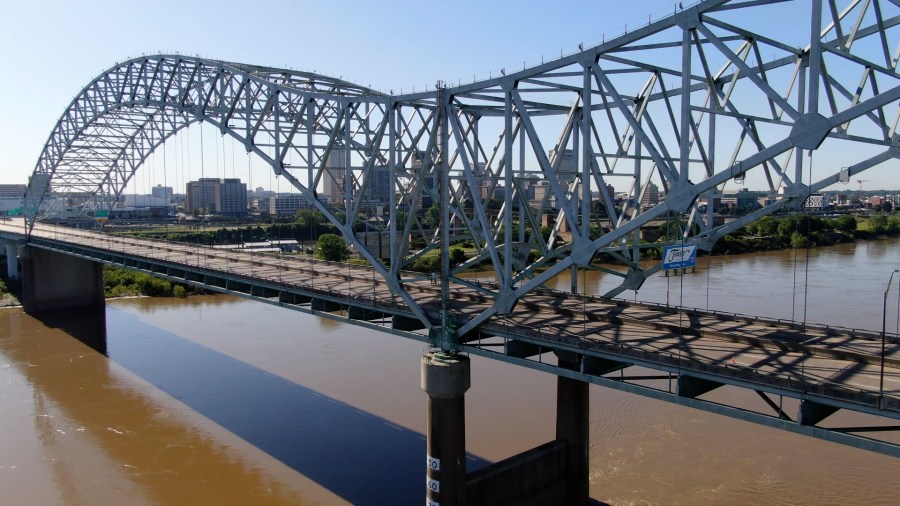MEMPHIS, Tenn. — Even for experts who study and build bridges every day, the case of the Hernando DeSoto Bridge shutdown is raising eyebrows.
“I was shocked,” said civil engineering University of Memphis professor Dr. Adel Abdelnaby when he saw the image of the crack on the I-40 bridge over the Mississippi River.
Abdelnaby has actually worked on the Hernando DeSoto Bridge through a partnership between the University of Memphis and the Tennessee Department of Transportation. But in that capacity, he said they were studying earthquake protection and potentially overlooking the bigger danger: the structural design of the bridge.
“Are you saying this bridge is perhaps structurally deficient?” WREG asked.
“In terms of design, yeah. Having the ‘M’ shape of the bridge that the middle span is sagging more,” he said of the design flaw.
He explained the bridge was designed back in the 1960s, before computer models could predict issues like the fatigue crack.
He also demonstrated how a fatigue crack happens. Heavy traffic is the main cause.
“What happened is these cables in the middle stretched too much,” he said.
In fact, Abdelnaby said he tried bringing the risk to the attention of TDOT in the past. He showed us a research proposal he submitted in 2019 suggesting the department make upgrades to prevent fatigue cracks on metal bridges exactly like the one we’re dealing with now.
“They were overlooked,” he said of his proposals.
Now, TDOT says inspectors are looking at how long a fix will take.
“Until we have that analysis complete we won’t be able to answer that question,” Chief Engineer Paul Degges said.
To do that, Abdelnaby said they’re using x-ray technology to figure out if there are more cracks in other parts of the bridge.
If not, he said the fix should only take a few days.
But if there are more hints of danger, they’d have to replace a much bigger part of the bridge. That could take six months to a year, he said.
Degges echoed that prediction.
“It’s plausible this could be months rather than weeks,” he said.



















